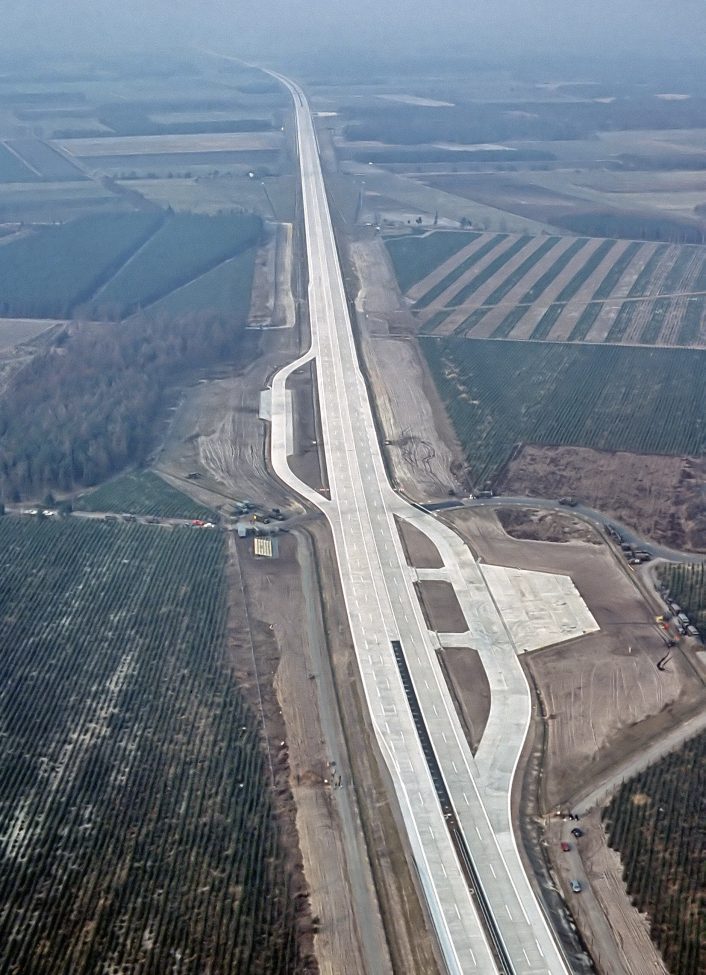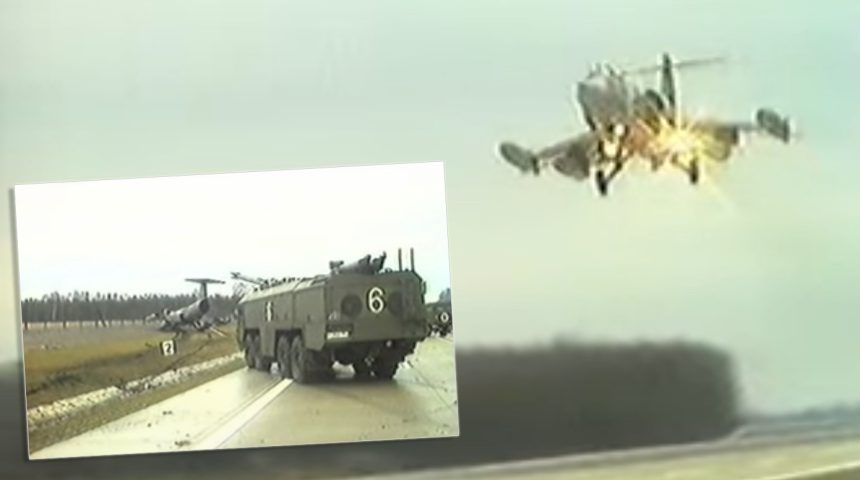There was a time when the German Air Force F-104s trained to land on Autobahn.
As already reported, after WWII and through the Cold War some countries (especially in eastern Europe) developed the concept of highway strips: a section of a highway, motorway or other form of public road used as backup runway for military aircraft (mainly, light jets with STOL – Short Take Off and Landing – capabilities).
The purpose of these highway strips was to get rid off one of the basic drawbacks of combat planes – runway dependency. In fact, airstrips were not secret, neither in the West nor in Soviet Russia: they would be targeted and possibly destroyed at the beginning of any conventional or nuclear conflict, making alternate ways to launch and recover jets.
The German Autobahn, designed in the 1920s and 30s, had sections that could be used as runways by tactical jets as well as military cargo planes: for instance, the A 29 is one example of highway where NATO planners, during the Cold War, built a road to accommodate NATO aircraft in case of war. Modifications to the section of the Autobahn to make it available for aircraft required just a few hours.
The footage below, filmed in March 1984, during exercise “Highway ’84”, is particularly interesting as it shows an aircraft rarely seen operating from public roads: an F-104G Starfighter of the German Air Force (Luftwaffe) in “heavy” (tip + pylon tanks) configuration.
The video shows the F-104G “23+30”, belonging to JBG34 based at Memmingen Air Base, performing its usual high-speed landing [for more on landing the F-104 read this recent post], on Autobahn A 29 between Ahlhorn and Groβenkneten and ending its landing roll in the grass, with a collapsed nosewheel, on Mar. 29, 1984.
Before the usual debate on the “Widow maker” starts, here’s what this Author wrote about the F-104 safety record in the book “Italian Starfighters“, published in 2010:
“if we include prototypes, 2,580 F-104 were employed by the air forces of 15 countries. The F-104 represented a huge leap forward for all those countries that passed from old subsonic and “forgiving” jets to a multirole bisonic aircraft which called for a much greater concentration on the part of pilots who were often faced with split second decisions.
The transition from the previous generation of aircraft to the high performances of the F-104 was often far from painless. One of the main users of this aircraft, the Luftwaffe, that owned 916 F104Gs, was beset by numerous tragic accidents. Even if these were to be blamed on human factor and on poor weather conditions that the German pilots had to deal with, rather than on the aircraft itself, the Starfighter was nonetheless undeservedly dubbed the “widow maker”.
An epithet that was firmly rejected by the Italian pilots who have been involved with the F-104 for over forty years and who can only but attest their genuine love for this fighter, appreciate its great power and reliability and who prefer to call it with the nicknames “Spillone” and “Chiodo” (“Nail”). Overall, despite many years of service, the F-104 has proven to have an accident rate that is in line with comparable aircraft, and in some cases much lower.”
Noteworthy, “Highway ’84” was carried on A 29 shortly before the commission of this section of the motorway northwest of Ahlhorn: the emergency landing field featured a concrete middle strip and three parking areas and it was abandoned after reunification.

Several other aircraft types (including A-10s, F-4s, F-16s, C-130s and Alpha Jets) took part in Highway 84 exercise as shown in the video below:
Highway operations were part of the standard training conducted mainly in Central, Eastern and Northern Europe during the Cold War until the collapse of the Warsaw Pact made highway take-offs and landings less frequent. Still, the whole region is still scattered with highway strips as well as abandoned Warsaw Pact military airfields, which have not been in use since the Cold War, and that are perfectly suited for such kind of training.
For instance, last year, the U.S. Air Force A-10s practiced austere landing and take off on Jägala-Käravete Highway in Jägala, a rural highway in northern Estonia. That is the very same unprepared landing strip where, on Aug. 10, 2017, one of the A-10C (assigned to the 104th Fighter Squadron, Maryland Air National Guard) hit and damaged a road sign while performing landing and take off training.
Moreover, training for operations from dispersed places, including public roads, continues in the Nordics region of Europe, where Finnish and Swedish planes perform regular highway operations as well as in Asia too, where we can observe combat jets take off and land on public roads in Singapore and North Korea.









